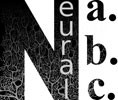Brain Connectivity
Functional connectivity
Functional connectivity is the integrated representation of local functional dynamics within the complex structural network of the brain. Non-invasive methods such as electroencephalography (EEG) and functional magnetic resonance imaging (fMRI) can be used to assess brain function at the level of interacting systems or networks – with resting state functional connectivity (rsFC) using fMRI to provide key insights into brain organization, behaviour and disease states.
Functional dynamics
Power-law dynamics, a feature of the temporal autocorrelation of individual time series, are found throughout physical and biological systems and are ubiquitous in functional brain data. Rather than relating two time series together, as is common with standard functional connectivity and rsFC analyses, previous work has shown that the intrinsic fluctuations of a single region may provide additional insight that is not dependent on the structure of bivariate correlations. These intrinsic functional dynamics reflect the local activity changes that are a result of the integration of inputs/outputs from/to different regions and local processing. We have implemented a method for rapid quantification of functional dynamics of individual time series in fMRI and are assessing the relationship to standard measures of connectivity in both resting state fMRI and EEG, with the aim of developing an unbiased and quantified representation of the functional organization of the brain.


